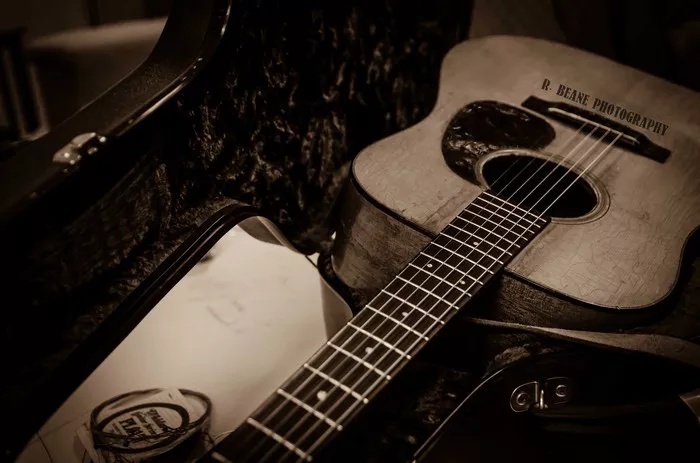In the grand tapestry of American music, few genres have as rich a history and as dedicated a following as country music. The 1990s marked a pivotal period in the evolution of this beloved genre, witnessing a dynamic blend of traditional roots with modern influences. From the emergence of new stars to the crossover success of established artists, the decade of the 90s brought about significant changes that continue to shape the landscape of country music today.
The Rise of New Traditionalists
As the 1990s dawned, country music found itself at a crossroads. The previous decade had seen the genre undergo a considerable transformation, with the rise of country-pop and the urban cowboy movement dominating the airwaves. However, amidst the glitz and glamour, a new wave of artists emerged who sought to reconnect with the genre’s traditional roots.
Leading the charge were acts such as Alan Jackson, George Strait, and Randy Travis, whose emphasis on honky-tonk sounds and heartfelt storytelling resonated deeply with audiences. Songs like Jackson’s “Chattahoochee” and Strait’s “Check Yes or No” became anthems of the era, showcasing a return to the pure country sound that had defined the genre’s golden age.
The Changing Face of Women in Country
The 1990s also witnessed a shift in the role of women within the country music industry. While trailblazers like Dolly Parton and Loretta Lynn had paved the way for female artists in previous decades, the 90s saw a new generation of women making their mark on the genre.
Artists such as Shania Twain, Faith Hill, and Martina McBride brought a fresh perspective to country music, blending traditional elements with contemporary production techniques. Twain’s groundbreaking album “The Woman in Me” shattered records and stereotypes alike, showcasing a bold fusion of country, pop, and rock influences that appealed to a diverse audience.
Meanwhile, Hill’s crossover success with hits like “This Kiss” and McBride’s powerful ballads such as “Independence Day” demonstrated the genre’s ability to evolve while staying true to its roots. These women not only topped the charts but also challenged conventions, proving that country music was a genre where female voices could thrive.
The Influence of Pop and Rock
While traditional country sounds remained a cornerstone of the genre, the 1990s also saw an increasing influence of pop and rock music on country artists. Crossover collaborations became more common, blurring the lines between genres and expanding the reach of country music to new audiences.
One notable example of this trend was Garth Brooks, whose energetic performances and catchy melodies helped him become one of the best-selling artists of all time. Brooks’ ability to seamlessly blend country with rock and roll elements paved the way for a new generation of crossover stars, setting the stage for the genre’s continued evolution.
Similarly, acts like Brooks & Dunn and the Dixie Chicks embraced a more rock-infused sound, injecting a dose of swagger and attitude into their music. Songs like Brooks & Dunn’s “Boot Scootin’ Boogie” and the Dixie Chicks’ “Goodbye Earl” became staples of country radio, showcasing the genre’s versatility and broad appeal.
The Impact of Technology
As the 1990s progressed, advancements in technology began to reshape the music industry as a whole, and country music was no exception. The rise of digital recording techniques and the internet revolutionized the way music was produced, distributed, and consumed, opening up new possibilities for artists and fans alike.
Country artists embraced these technological innovations, experimenting with new sounds and production techniques to push the boundaries of the genre. From the use of synthesizers and drum machines to the incorporation of sampling and looping, the 1990s saw a proliferation of sonic experimentation within country music, leading to a diverse array of sounds and styles.
Moreover, the internet provided a platform for artists to connect directly with their fans, bypassing traditional gatekeepers and fostering a sense of community within the country music community. Social media platforms and streaming services allowed artists to share their music with a global audience, breaking down barriers and forging connections across geographical boundaries.
Conclusion
As we look back on the country music of the 1990s, it’s clear that the decade was a time of transition and transformation for the genre. From the resurgence of traditional sounds to the embrace of pop and rock influences, the 90s saw country music evolve in exciting new directions, laying the groundwork for the diverse and dynamic landscape we see today.Moreover, the legacy of the artists who emerged during this period continues to shape the genre’s trajectory, inspiring future generations of musicians to push boundaries and defy expectations. Whether it’s the timeless ballads of Alan Jackson, the genre-bending hits of Shania Twain, or the electrifying performances of Garth Brooks, the music of the 1990s continues to resonate with audiences around the world, proving that the spirit of country music is alive and well in the 21st century.

